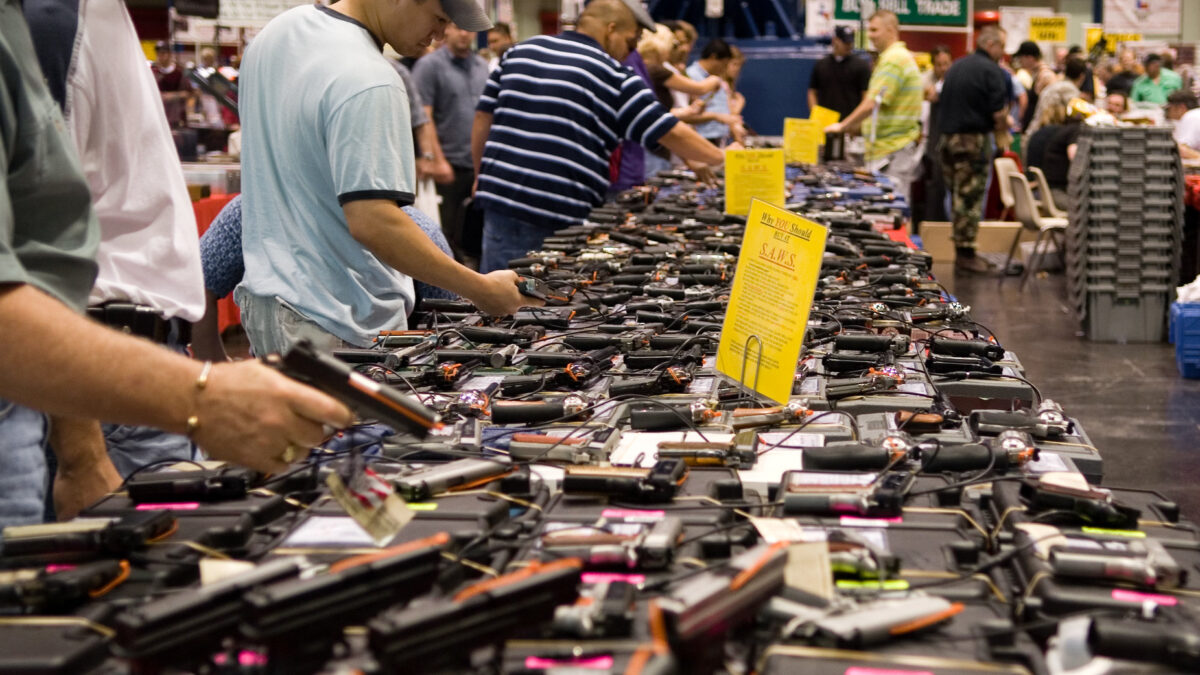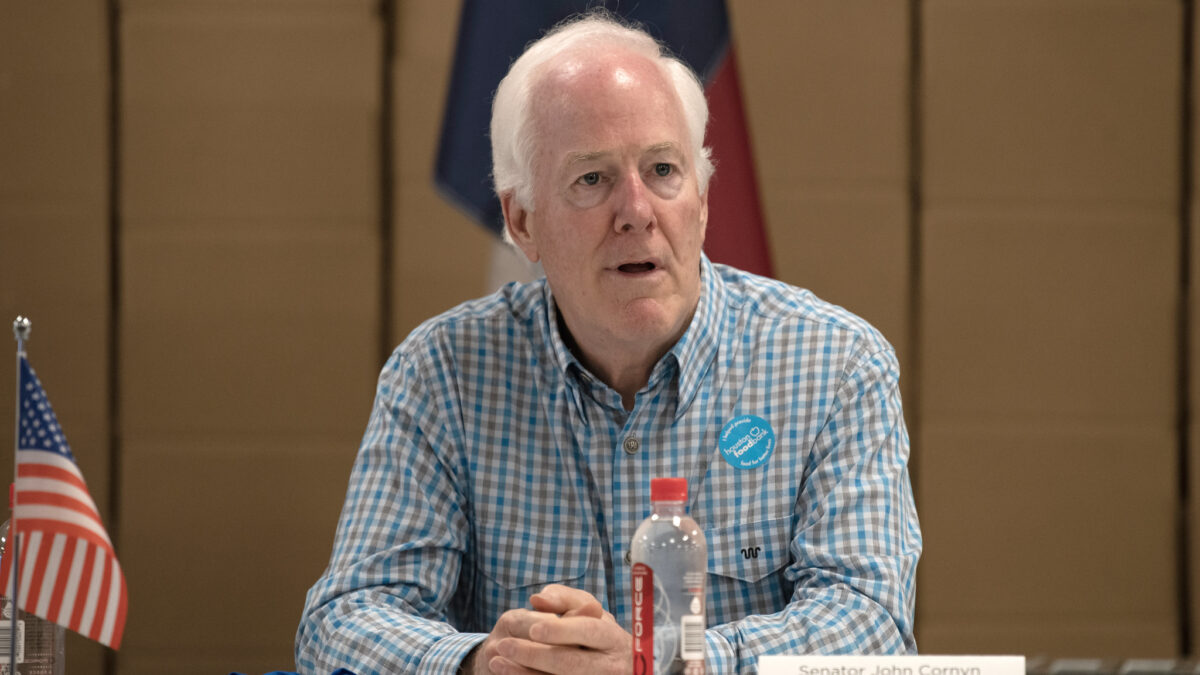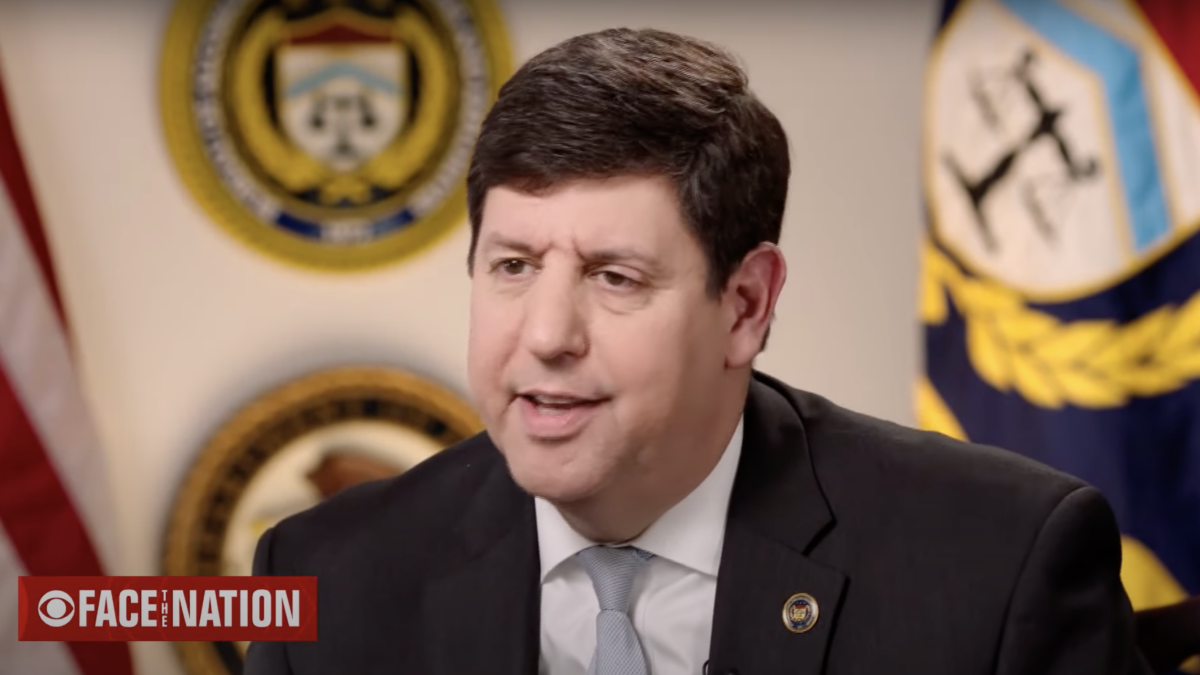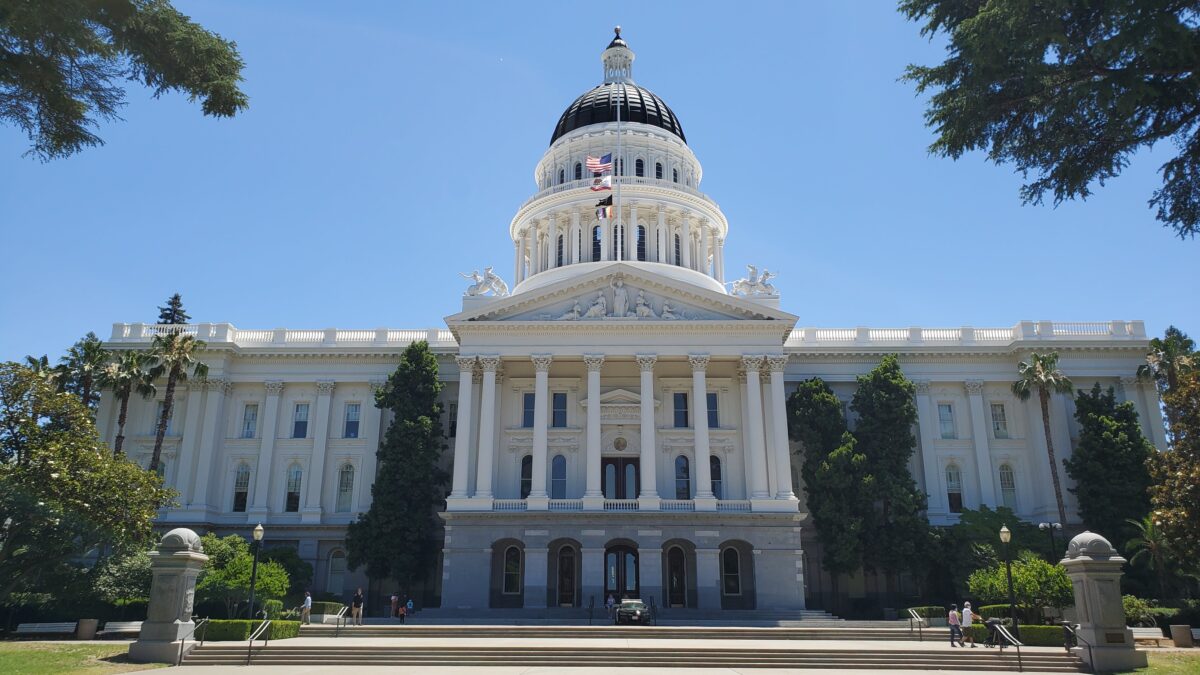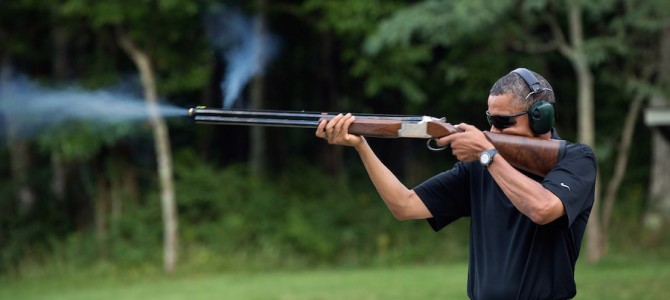
Of all the freedoms that puzzle non-Americans most, the Second Amendment must surely top the list. While most of the constitutional rights, such as freedom of religion and speech, enjoy similar recognition and respect in Europe, the right to bear arms seems far removed from our definition of freedom.
So when I knew I would be heading to Kentucky, the gateway to the South, experiencing the freedom of shooting was near the top of my “do list.” My original plan had been to visit one of Louisville’s several shooting ranges, many of which happily catered to international visitors. I read through the various FAQ documents and pricelists to prepare. Yet getting my hands on a gun turned out to be simpler than I had expected, thanks to good old-fashioned Southern hospitality.
My entry point to this new world was an acquaintance I had made the day before, when I attended one of the voting stations for the Kentucky Republican caucus. Will was a committed political campaigner and a gun rights advocate. At 25 years old, he was happily married and the archetype of a local politician in the making: photogenic, friendly, and connected with Louisville’s movers and shakers.
When I started dropping hints about wanting to visit a shooting range, I had cheekily hoped he might volunteer to take me. Most of the ranges were a good 30 miles from metropolitan Louisville, and I was stuck in the rather un-American position of relying on public transport (or, at the very least, Uber). But Will had a better idea.
“Tomorrow, Janelle and I are heading out to see her parents—and her dad is a real gun nut. You should come too,” he said.
“You don’t think he would mind?”
“Teaching a clueless European to shoot for the first time? Are you kidding? He would love it.”
We Drive Out to ‘The Farm’
So the next day we drove out to the family’s “farm,” a former plantation deep in Kentucky’s rural “horse country.” Pulling up a sprawling country house complete with stables and acres of hilly grass, I could hardly believe my luck.
As we stepped up the drive, Will rattled off details. This was where the Hamptons had raised their children, four of whom still lived there. It was home to the family’s four cats, two dogs, and three horses, all of which had been rehomed from local sanctuaries. Oh, and the family’s guns, too.
Will’s mother-in-law greeted us in the kitchen, calling down two daughters to say hello. We drank soda while I answered half a dozen questions about how I was enjoying Kentucky, how it compared to London, and the like. My shooting tutor for the day, Mr. Hampton, was still finishing some work outside.
From the moment Mr. Hampton walked in, he was every inch the natural host: warm, gregarious, with a gently commanding presence and a loud laugh. He fired off some loaded questions about British politics: what did I think of Nigel Farage? How was the government responding to the terrorist attacks in Paris and Brussels? Did I really consider David Cameron a conservative?
The Roots of the Second Amendment
He then took me to his “gun safe.” As he held up each of the guns in turn, I made my first mistake. I asked if I could take photos.
“Any photos you take are geo-stamped and available through the cloud,” he explained. “Now, everything I own here is legal, but in future that might not be the case. In that scenario, I do not want the government knowing what I have.”
This was my first insight into the politics of gun ownership, and what I would later learn was a familiar trope for gun enthusiasts: the idea that an authoritarian government would target the Second Amendment.
This suspicion ran deep. When I asked Mr. Hampton if he had attended the Republican caucus, for example, he told me that he was actually a registered Democrat. Before his retirement he had worked in health care, where many of the senior management were active Democrats. Worried about professional retribution for his political views, he had registered as a Democrat as to keep his true leanings secret.
Mr. Hampton hauled six of the guns, a handful of targets (laminated “bulls eye”-style designs one can purchase from a gun store and then attach to pre-existing fixtures in your garden), and a dozen boxes of ammunition into a small trailer hitched to the back of what looked like a sit-on lawnmower. We then headed out, him driving and me following, to a large clearing 100 yards or so from his back porch.
First Things First: Gun Safety
Before I could even touch one of the guns, however, Mr. Hampton wanted to tell me about gun safety. The vast majority of gun fatalities, he explained, were actually the result of people failing to observe basic rules of safety. He picked up a Smith and Wesson handgun and began to demonstrate. He pushed a loaded magazine into the gun before unclipping it and placing the magazine back on the table.
“Now tell me,” he said. “Is this gun loaded?”
“I… I don’t know.”
“And that is exactly the right answer,” he said proudly, maybe mistaking my general cluelessness for some kind of nifty intuition. He turned the gun over and showed how one solitary bronze bullet had made its way into the barrel.
This was one of the biggest mistakes people made, he explained: assuming a handgun without a clip was unloaded when, in fact, it still had a bullet lodged inside. In Hollywood, this was a pretty commonplace plot twist (the famous “one in the chamber”), but in real life, it was also a big factor in accidental gun deaths.
Mr. Hampton pushed the magazine back into the gun and handed me a pair of ear protectors and goggles. It looked like I was going to be firing the first shot.
“Now, we are going to walk down the range, closer to the target. But first you need to listen up. You only shoot that way,” he said, pointing down the range. “You do not shoot right, because that is not my property.”
I looked over to the right and saw a few scruffy knolls and bundles of twigs. There was absolutely nothing to distinguish this land from that on the makeshift range in front of me.
“But there are bullets there,” I said, pointing to the ground.
“I know. Because my neighbor shot them. But it is not my property, so we will not be shooting that way.”
This was something that I learned went hand-in-hand with gun freedoms: the sacrosanct nature of property rights. Even though his neighbors’ strip was essentially wasteland and not separated by any kind of fence or feature, it was still their property. And they retained absolute jurisdiction over it.
In fact, the right to protect your property is a hot topic in Kentucky. In just a few days’ time a local court would adjudicate in the case of a local gun owner who had shot down a civilian drone flying over his land. My hosts, like many local families, had become avid supporters of the defendant, signing petitions calling for his liberty to be upheld.
Then, the Death Threat
“Oh, and if you turn around and face back this way—facing towards my house, my family, or my horses with that gun—then, believe me, I will shoot you first.”
I felt a flurry of adrenaline. It felt strange to receive an effective death threat (albeit an entirely conditional one) from a man who had been offering me his finest breakfast snacks just an hour or so beforehand. But given the circumstances—I was effectively a total stranger holding a lethal weapon next to his family home—it made sense.
I tensed my shoulders and prepared to shoot. Mr. Hampton leaned over and showed me how to line up the sight on the gun, and where to place my hands. I was nervous. I remembered a time as a teenager when I had managed to give myself a black eye by underestimating the recoil on a friend’s low-grade air rifle. I gripped the gun tight and prepared myself for the jolt.
The handgun gave off no more than a gentle push upwards. There was a quick flash of flame which, viewed through my goggles, seemed slightly distant and other-worldly, almost like a video game. I could just make out the shreds of cardboard flying into the air as the bullet ripped through the target.
“You got it. Slightly to the right though,” he said, squinting into a pair of binoculars.
The gun was a semi-automatic, so was ready to shoot again without any effort from me. I gently squeezed the trigger. Again, there was a loud bang, a slight pop upwards. I fired again, twice, in quick succession.
“We call that rock and rolling,” said Mr. Hampton. “It’s hella fun, but you’re going to lose your accuracy that way.”
We worked our way through a few boxes of ammo, as I tried to refine my accuracy and decide which gun I preferred. After ten minutes, I spotted two of Mr. Hampton’s daughters heading down to join us, one wearing her bright pink ear protectors. They told me that their father had taught them to shoot when they turned 12 years old. Judging by their accuracy with the target, he seemed to have done a fine job.
They were curious about my first experience, which I found myself describing, in a moment of unselfconsciousness, as “pretty exhilarating.”
‘How About We Move On to Something Bigger’
“Now, how about we move on to something bigger,” said Mr. Hampton, reaching into the trailer to retrieve his piece of pride: a heavy-duty AR-14 assault rifle, the same model used by U.S. troops in Iraq and Afghanistan. It was a slick piece of machinery, with the stylish, clean finesse of a top-range sports car. He smiled proudly as I looked it up and down.
I took my place in the chair and placed my right arm on the gun rest. I held the gun in front of me and began to line up the sight. Although it looks like a modern assault rifle has a manual binocular-style scope, the image actually comes from a razor-thin laser beam which, although capable of offering crystal-clear vision at some 500 feet, can take an awfully long time for a beginner to master.
I shifted around in my seat, trying to maneuver my eye into the line of vision. I worried that for the first time my natural cack-handedness was going to get in the way of things. Then, with the suddenness of a biblical apparition, I saw it: the red, blue, and yellow of the target, sitting neatly between the axes of the crosshair.
I gingerly shifted the gun into position until the bull’s eye of the target seemed to be sitting in the center of the crosshair and, with the slightest twinge of my trigger finger, let rip. The flurry of bullets tore through the target and sent clumps of soil flying up from the ground below.
If this didn’t capture the feeling of freedom that came with shooting, it was hard to know what would.
An Experience of American Freedoms
That night I stayed at the farm and ate dinner with the Hamptons. They asked me to say a few words about my first experience of shooting and I duly obliged. I told them how grateful I was for their hospitality, not to mention the 40 dollars’ worth of ammunition we’d managed to spend down at the range. Remembering their fondness for horses, I thought I had a way to make it up to them.
“It would feel crass to offer you money,” I said. “But I’d like to give something back. Perhaps I could make a donation to a local horse sanctuary?”
Mr. Hampton cut me off.
“You don’t have to do that. All we want is for you to experience the freedoms that we have in this country.”
He raised his glass and proposed a toast: to freedom. We enthusiastically clinked our glasses.
Why Americans Want to Own Guns
When asked why they owned guns, the Hamptons talked about protecting themselves. Here on the farm, miles away from essential services and community, they felt at the mercy of any potential intruders and wanted to know they had the means to defend themselves.
But it wasn’t just rogue intruders or opportunistic criminals they sought to counter. It was also much bigger and more powerful forces. America’s Founding Fathers, who fought against authoritarian British rule, had envisioned the Second Amendment as a way for citizens to protect themselves against rogue government. As far as Mr. Hampton was concerned, this remained as a valid as ever.
“Taking away a citizens’ right to protect themselves is a necessary first step towards dictatorship,” explained Mr. Hampton. “Every dictatorship in history—Nazi Germany, the Soviet Union, Pol Pot—was able to do what it did because it had successfully disarmed and pacified the population first.”
On an immediate level, Mr. Hampton’s conviction in gun ownership was about keeping government power in check. But it also went right to the heart of the U.S. Constitution. If the Second Amendment were rescinded, then what would stop the government from scrapping those other essential liberties it outlines: freedom of speech and conscience, or freedom from slavery?
Will and I discussed this long into the night, as we sat on the porch swigging glass after glass of Kentucky’s finest bourbon. I liked Will. He was urbane, empathetic, and had an unmistakable socially liberal streak. But while he didn’t share his father’s knee-jerk antagonism towards the U.S. government, it was clear he was equally adamant in his belief in peaceful gun ownership. Despite my initial skepticism, I found him a persuasive advocate.
By Default, Humans Should Be Free
As the effect of the bourbon faded, I found my queasiness about guns returning. I thought about that famous yardstick of individual freedom—the commonly articulated “harm principle.” This was the idea, set out by John Stuart Mill, that we should be free to do anything as long as it didn’t harm others. It was hard to escape the idea that guns weren’t just capable of enacting the most severe definition of “harm” possible, they were specifically designed for it.
The Second Amendment also seems to differ from some of the other constitutional rights in that it wasn’t essential per se in delivering a prosperous society in its own right—unlike, for example, the right to freedom of speech, or freedom of religion. I understood that gun ownership is a way of limiting governments’ power, but weren’t there easier, and more effective, ways of doing this?
But as I left the farm and returned to the open roads of Kentucky, my thoughts began to crystallize. On these 50 or so acres, the Hamptons had succeeded in creating their own realm. Rather than just a home, they had turned this land into their own jurisdiction, where the family lives by its own values. Theirs was a small world of civic values, charity, a genuine openness to visitors, and, above all, a strong sense of personal responsibility. In that realm, at least, it seemed hard to deny them the freedom to shoot.
The Hampton family’s names have been changed to protect their privacy.


